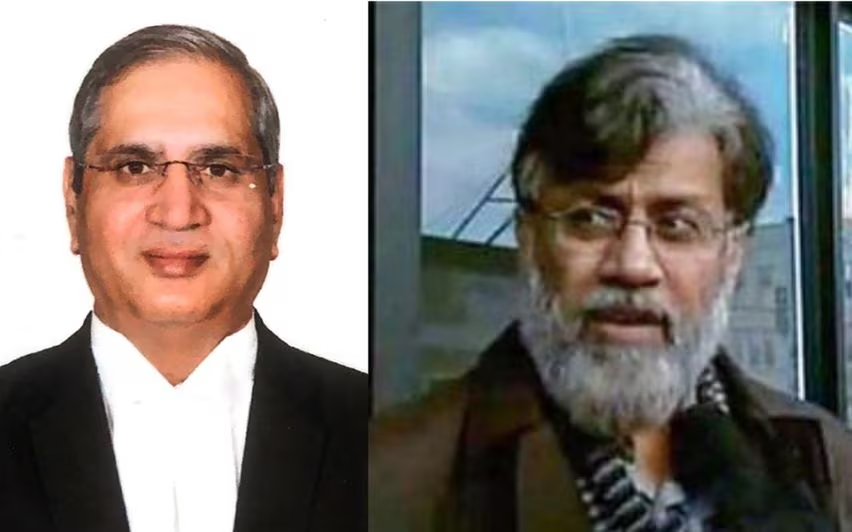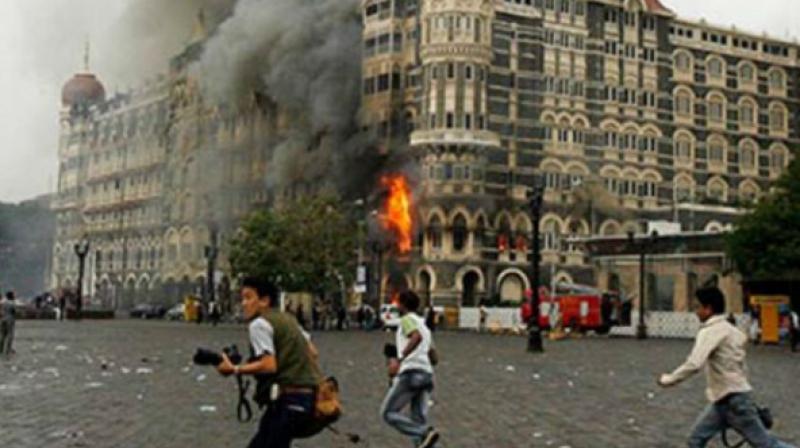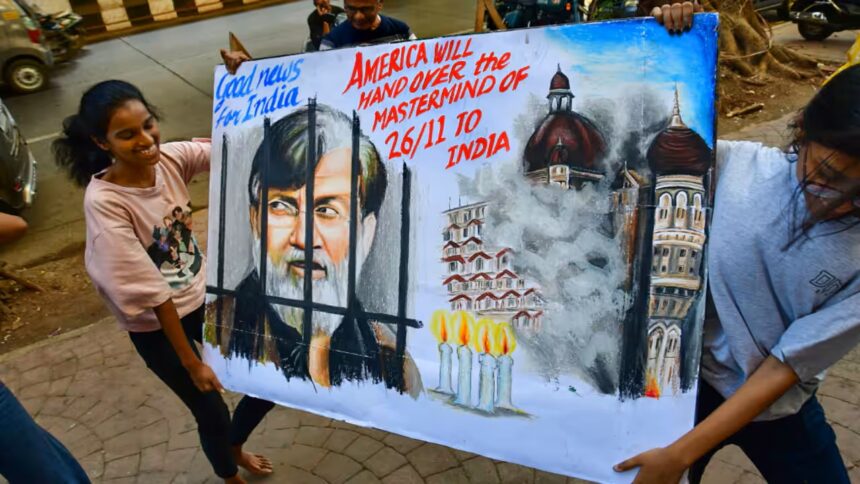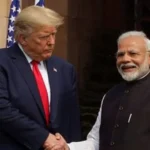Pakistan-born Tahawwur Rana, wanted for his involvement in the 2008 Mumbai terror attacks, has been extradited from the United States to India. The National Investigation Agency confirmed his arrival in Delhi yesterday.
In 2011, a US court ruled that Rana was not directly involved in planning the attacks, which claimed 166 lives, but found him guilty of supporting Lashkar-e-Taiba (LeT), the militant group held responsible.
Rana, sentenced to 14 years in prison in 2013, was released in 2020 due to health issues but was re-arrested later that year following India’s extradition request. A US court approved his extradition in 2023, but it was delayed pending final clearance from the government.
President Donald Trump gave his approval after discussions with Indian Prime Minister Narendra Modi. The US Supreme Court later rejected Rana’s appeals against the extradition. The extradition was carried out under the 1997 India-US Extradition Treaty.

The Tahawwur Rana Extradition
Tahawwur Rana grew up in Pakistan and trained as a doctor before joining the medical corps of the Pakistani army. In 2001, he and his wife became Canadian citizens. They eventually settled in Chicago, where Rana managed several businesses, including a travel and immigration agency.
Indian authorities accuse Tahawwur Rana of collaborating with David Coleman Headley, a childhood friend, to assist Lashkar-e-Taiba in planning the 2008 Mumbai attacks.
The group of 10 militants attacked high-profile locations in Mumbai, killing civilians and using bombs and firearms. Both India and the US classify LeT as a terrorist group.
US prosecutors argued that in 2006, Rana allowed Headley to open a branch of his immigration services company in Mumbai. Headley allegedly used this office as a cover to scout locations for the attacks.
Tahawwur Rana was also accused of allowing Headley to pose as a company representative to gain access to newspaper offices under the pretext of buying advertising space.
Headley, who admitted to helping identify attack sites, was a key witness for the prosecution. He claimed ties to both LeT and Pakistan’s intelligence agency, ISI. Pakistan has repeatedly denied any involvement.
Headley also testified against Rana, stating that Rana had been complicit. Tahawwur Rana’s defence argued that he had been deceived by Headley, a long-time friend from military school.
In 2011, a federal court in Chicago convicted Rana of supporting LeT and participating in a failed plot against the Danish newspaper Jyllands-Posten. However, he was acquitted of direct involvement in the Mumbai attacks.
He received a 14-year prison sentence. Headley, meanwhile, was sentenced to 35 years and remains in a federal prison in Chicago.

Charges Against Tahawwur Rana in India
In India, Tahawwur Rana and Headley were tried in absentia for their alleged roles in the the Mumbai terror attacks. Headley later cooperated with investigators and became an approver in the case. Charges against Rana include criminal conspiracy, waging war against the Indian government, and terrorism.
Tahawwur Rana argued in US court that his extradition violated double jeopardy laws, as he had already faced trial in the US for related offences. However, the court ruled that the charges in India were distinct from those prosecuted in the US.
Rana’s legal team also opposed extradition on the grounds that he could face torture in India, citing his Pakistani origin and Muslim identity as factors that could put him at risk. They further highlighted his health issues and raised concerns about prison conditions in India. These appeals were rejected.
Ujjwal Nikam, a former public prosecutor for the Mumbai case, told ANI news agency that Rana’s extradition could shed light on Pakistan’s alleged involvement in the attacks.
Related News:
Fake Doctor Arrested in India After 7 Patients Die After He Performed Heart Surgeries

Geoff Thomas is an award winning journalist known for his sharp insights and no-nonsense reporting style. Over the years he has worked for Reuters and the Canadian Press covering everything from political scandals to human interest stories. He brings a clear and direct approach to his work.














